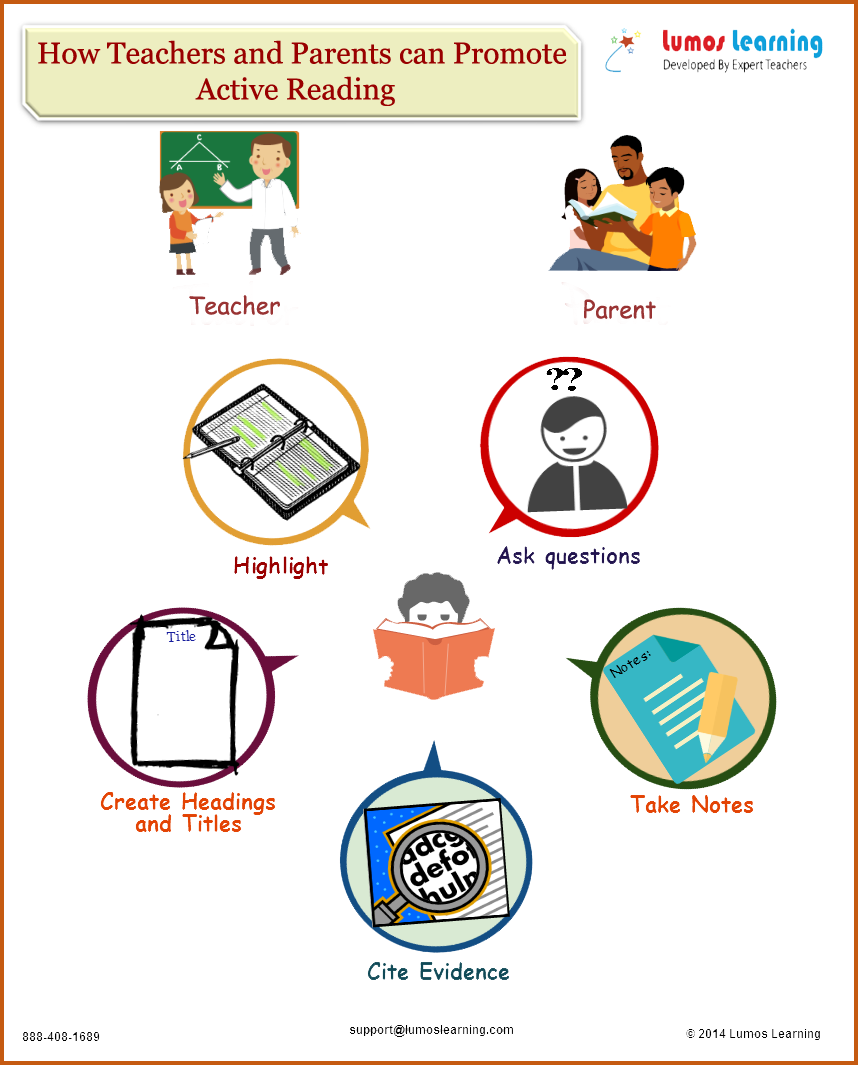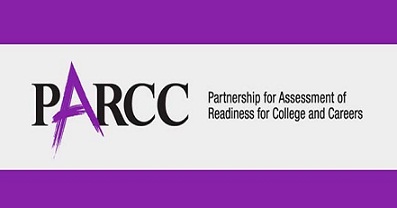The Common Core Standards require that “by the end of the year, [the student will] read and comprehend literature [and informational text] with scaffolding as needed at the high end of the range” (
www.corestandards.org). Along with this standard are other related objectives that require active reading skills.

How, then, can we promote active reading among our students? The suggestions below will help students to think critically and slow down their reading (when appropriate) to better comprehend the text. In addition, these suggestions tie into the Common Core reading standards – for both informational literature and fiction.
(Note: for the purposes of these recommendations, 6th grade reading standards will be referenced. However, similar standards exist at other grade levels as well).
(1) Highlight
This strategy is not a new one, and most people remember highlighting textbooks at some point in their educational careers. This old standby is still effective, though, because highlighting the important points helps students better understand what they read. Standards RI 6.2 and RL 6.2 require that students “determine a central idea of a text and how it is conveyed through particular details” (
www.corestandards.org). By highlighting during or after reading, a child can identify key details and then infer the main idea, theme, etc.
(2) Ask questions before, during and after reading
Giving students guiding questions before they read helps them to focus on the upcoming passage or chapter, while asking questions during reading allows students to monitor their own comprehension. These question may begin with phrases such as “I wonder . . . ” or “Why did the character . . . ” or “How did . . . ” Asking questions after reading demands that the student reflects on the passage, and sometimes this means that the reader must revisit the text (and reread portions) to locate an answer or to find evidence to support an inference. Asking questions reinforces standards RI and RL 6.5 and 6.6, which requires the student to “analyze how a sentence, paragraph, [etc.] . . . fits into the overall text structure of the text” (
www.corestandards.org).
(3) Create headings and titles
For nonfiction reading, the teacher may wish to delete the article’s headings and subtitles and ask students to create them instead. This forces the reader to identify important themes and synthesize information in order to create appropriate headings and subtitles. In addition, the student must determine importance, another reading strategy that lends itself to comprehension and active reading.
(4) Take notes
One research study investigated the effect of a particular type of note taking on comprehension and found that this strategy yielded positive results. The researchers required mathematics students to complete “note launchers” to reflect their comprehension of mathematical concepts from the textbook. These note launchers asked students to fill in key terms, formulas, etc. so they would not gloss over the reading, making the activity more than a passive one. The notes forced the reader to stop and reflect on his or her understanding of the material, and the students who took part in this study were found to better understand the text they read (Helms and Helms, 2009). Clearly, asking students to take notes can transform their reading in the content areas into a more active experience.
(To learn more about this study, visit:
http://www.usma.edu/cfe/Literature/Helms_09.pdf)
(5) Cite evidence
RI 6.1 and RL 6.1 ask the student to cite evidence from a passage to “support analysis of what the text says explicitly, as well as inferences drawn from the text” (
www.corestandards.org). Citing evidence is one way to verify that the student has really thought about what’s in the text; moreover, if the student did not fully understand the material the first time, revisiting the text to locate and cite evidence will prompt the student to become more actively involved with the reading.
Reading can all too easily become a passive pursuit, with students’ eyes merely glossing over the words without much thought or reflection. By putting supports in place to encourage and nurture comprehension skills, we can continue to make reading an active experience for students.
PARCC Test Practice: Online Resources for Your Children
 How, then, can we promote active reading among our students? The suggestions below will help students to think critically and slow down their reading (when appropriate) to better comprehend the text. In addition, these suggestions tie into the Common Core reading standards – for both informational literature and fiction.
(Note: for the purposes of these recommendations, 6th grade reading standards will be referenced. However, similar standards exist at other grade levels as well).
How, then, can we promote active reading among our students? The suggestions below will help students to think critically and slow down their reading (when appropriate) to better comprehend the text. In addition, these suggestions tie into the Common Core reading standards – for both informational literature and fiction.
(Note: for the purposes of these recommendations, 6th grade reading standards will be referenced. However, similar standards exist at other grade levels as well).






